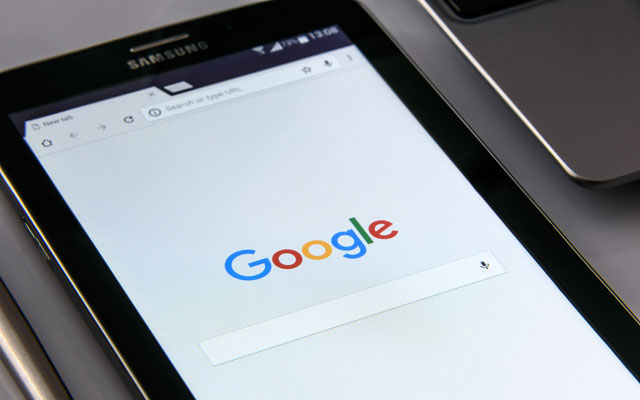
Amazon.com and Google parent company Alphabet posted results last week that extended their dominance of how we shop and search online. Apple and Facebook will in the coming days add evidence that tech behemoths command an ever widening share of consumer time and spending.
Amazon’s revenue soared as shoppers favoured it over brick-and-mortar stores, while Google parent Alphabet reported surging quarterly profit that highlighted the ubiquity of its search advertising business — especially on smartphones.
“Each has built unique moats that allow them to continue to dominate,” said Ben Schachter, an analyst at Macquarie. “For Google, no one can catch them on search because of the technology and intellectual property. For Amazon, scale is their friend and no one can compete on selection, price and fulfillment capabilities.”
The companies have vast networks of complementary products that feed off one another to generate more sales, making it ever harder for competitors to keep up.
“Given the strength of Google and Amazon, we think Facebook is likely to look similar,” Schachter said.
On Wednesday, Facebook is expected to report first-quarter profit of US$2,6bn, up 70% from a year earlier, while revenue climbs 45% to $7,8bn, according to analysts’ estimates compiled by Bloomberg.
When Apple reports fiscal second quarter earnings on Tuesday, sales are expected to climb 5% to $53bn. Revenue from the App Store and other services such as Apple Music will likely jump 20% to $7,2bn, according to UBS analyst Steven Milunovich.
“The general theme that the big are getting bigger” applies to Apple’s self-feeding ecosystem, Schachter said.
Every time Apple sells an iPhone, the customer buys apps and other services, feeding data such as photos and contacts into the device, making it harder to swap for a competitor’s device. Higher margin service revenue then feeds back into Apple’s development budget, helping it build more advanced products to sell to the same consumer.
Google’s advertising business is very different, but has similar self-feeding qualities. The company got 97% of mobile paid search clicks in the US in the first quarter of 2017, according to client data from digital marketing firm Merkle. That was up from 82% in the same period in 2014.
With more searches, Google gets more ad dollars to reinvest to keep its search engine ahead of the competition — mostly represented by Microsoft’s Bing. Google also gets more data on what results people click on, which can be used to improve its software even more, and keep people coming back to find information.
“There are clear benefits to that scale,” said Mark Ballard, senior director of research at Merkle. “There’s that feedback loop.”
For advertisers, Google’s large online audience makes it one of the first places to go to run online marketing campaigns. The other is Facebook.

Merkle client spending on Facebook ads was up 71% in the first quarter, from a year earlier. These advertisers get about 70% of their online traffic from Facebook and that hasn’t changed in recent years despite the rise of competitors like Snap, Ballard noted.
Facebook and Google captured 77% of US digital ad spending last year, up from 72% in 2015, according to a recent analysis of data from the Interactive Advertising Bureau by Pivotal Research Group.
For advertisers it’s “easier to concentrate budgets with a smaller number of players. It’s easier to manage,” said Brian Wieser, an analyst at Pivotal.
Marketers have long griped about the “duopoly” atop digital advertising. But they keep giving Google and Facebook money. That’s largely because few other places offer wide reach, channels for targeting consumers and better returns. Those advantages only multiply as the tech companies expand.
Verizon Communications’ new Oath ad business “may figure out a special sauce, but they will never be the first port of call”, Wieser said. When Google and Facebook get those calls first, they see what advertisers plan to spend elsewhere and can sell them other services and tools, according to the analyst.
Advertisers disagree about what company could offer a viable third alternative. Some suggest another internet titan: Amazon. The largest online retailer isn’t a leading digital advertising destination yet, but on its earnings call last week, chief financial officer Brian Oslavsky reported “consistent growth” from that business. Research firm EMarketer expects the company to generate more display ad revenue than Twitter by next year.
Even so, most of Amazon’s first-quarter revenue gains came from grabbing retail market share as more people shop online, rather than in stores. That shift is fueling a record pace of retailer bankruptcies this year, despite a growing US economy and solid consumer spending.
What began with bookstores, movie rental outlets and electronics retailers like Borders, Blockbuster and Circuit City, is spreading to apparel and sporting goods chains like Aeropostale and Sports Authority Holdings.
Once online spending in a category passes 20%, it’s tough for brick-and-mortar retailers to survive and easy for Amazon to gobble up market share, said Guru Hariharan, CEO of Boomerang Commerce, which designs software for large retailers. Amazon has been disciplined about only pursuing retail categories that are already shifting online, giving it momentum against competitors playing defence, he said, adding that more apparel bankruptcies will come in the next two years.
Like Google, which has introduced the Pixel smartphone to help secure its direct relationship with consumers, Amazon has introduced the Echo smart speaker to encourage customers to buy services and products from its website. The software makers are expanding into hardware to feed their money machines. — (c) 2017 Bloomberg LP




